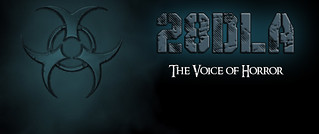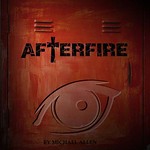Director: Craig Zobel.
Writers: Nissar Modi and Robert C. O'Brien.
Cast: Margot Robbie, Chris Pine and Chiwetel Ejiofor.
Z for Zachariah is a novel adaptation. The film takes place in a post-apocalyptic Christian paradise, in which a young religious woman struggles with loneliness. Loneliness is the least of her problems when two men enter her life. Here, the film's Christian themes become predominant and an Adam an Eve storyline is brought into the play. The Devil wins again and one character is tempted into murder, while another is tempted by lust. This dramatic film offers a sombre tone and very strong performances. Z for Zachariah is a compelling film and recommended to fans of the genre.
The film begins with Ann (Margot Robbie). Lilith, Eve or Ann is busy farming and looking after herself, in a remote valley. An undefined catastrophic nuclear event has irradiated everything outside of this idyllic setting a la Cormac McCarthy's The Road (2006). However, another character is quickly introduced, John Loomis (Chiwetel Ejiofor). He is a scientist and almost a foil to Ann; one character is religious and the other is atheist. Still, they find common ground as they work to ensure their own survival. Events are muddied with the introduction of another character, Caleb (Chris Pine). While a romance is burgeoning between Ann and Loomis, it is circumvented by Caleb. The delicate interplay between all three characters is complex and it eventually leads to murder.
An Adam and Eve plotline is at the center of the film. Yet, the film is not set in the past, but in the future. One character's beliefs are challenged with the introduction of a non-believer. Though, God does not boom done from above, commanding Ann and Loomis not to eat from the forbidden fruit. A church, which might symbolically represent the forbidden fruit, is torn down. From here, the fall takes place, in which Ann is tempted from love into lust. Her fall is not made alone, however. Loomis also falls when his jealousy leads to murder. Satan makes his way into the middle part of the picture and Ann cannot resist.
The film's one theme, of Christianity versus Atheism, is only partly developed. As well, it is quite apparent that the writer of the source material, Robert O'Brien, is heavily influenced by the former, rather than the latter. Christian themes are primarily introduced through Ann's character. She worships at a small church that her father built. She is reluctant to destroy this structure, despite necessity. She also prays during meals and talks with Caleb about her beliefs. Caleb shares her Christian devotion and he believes that a higher force helped him survive dangerous events. Atheist beliefs are less strong, with Loomis on his own. He is a scientist and promotes action, initiated by need. Need always wins when faced with irrational belief, in this viewer's opinion. The church's destruction shows the decline of spirituality and the rise of a more rational and violent mind. But, rationality and violence combine like oil and water, in reality.
Still, a conflict is needed and the climax involves more than just a clash of beliefs; Caleb is murdered by Loomis. Some reviews and discussions have thrown some doubt on whether Caleb is actually murdered as his disappearance occurs off-screen. Still, there is a great deal of film evidence to prove that Caleb dies not by accident, nor does he simply just leave the valley. In an earlier scene, after becoming intimate with Ann, he has given up on his desire to leave the valley: "there is nothing down there [south], anyway." Loomis appears disappointed by this exchange. In the next scene, Caleb struggles with a pulley, which Loomis is holding steady, with bright, blood-red gloves. The two men look at each other, with Caleb set to fall. And, Loomis has a guilty look on his face as if he is about to do something that he will be ashamed off. The scene fades and the camera tilts skywards, towards the heavens. It is as if another soul has entered the great beyond. Bright sunlight shines downwards on the viewer. Still, there is further metaphorical evidence. Ann is alone at a table. She pushes a glass off of it. The action is very similar to what would have happened, if the camera had stuck with the action between Loomis and Caleb. The camera would have shown Caleb falling down the falls and over an edge, much like the glass fell off the table. Finally, the film ends with a sombre song and the scene plays out much like a eulogy, with Ann playing an organ; this is a eulogy for Caleb. There is no counter-evidence to suggest this character survived this final encounter with Loomis, at the waterfall.
A great deal of the film is told through physical acting. Dialogue cannot always be trusted as two men fight for Ann's affections. So, the film requires and delivers strong performances from all of the actors. The story is equally compelling, despite the replay of a well worn plotline - Adam and Eve, the supposed start of humankind. The climax is developed appropriately and the final conflict is not hand delivered to the audience. Instead, viewers must find film evidence to discern what actually happened, the murder of Caleb. Very dramatic, Z for Zachariah is a great mix of a sombre tone with that of a consistent human experience - aloneness. It is what we do with that aloneness, which matters.
Overall: 8 out of 10.
An extended trailer for the film is available here:
A Z for Zachariah Trailer is Hosted Here - on 28DLA
Subscribe to 28 Days Later: An Analysis 28 Days Later Analysis Email Subscription
Writers: Nissar Modi and Robert C. O'Brien.
Cast: Margot Robbie, Chris Pine and Chiwetel Ejiofor.
Z for Zachariah is a novel adaptation. The film takes place in a post-apocalyptic Christian paradise, in which a young religious woman struggles with loneliness. Loneliness is the least of her problems when two men enter her life. Here, the film's Christian themes become predominant and an Adam an Eve storyline is brought into the play. The Devil wins again and one character is tempted into murder, while another is tempted by lust. This dramatic film offers a sombre tone and very strong performances. Z for Zachariah is a compelling film and recommended to fans of the genre.
The film begins with Ann (Margot Robbie). Lilith, Eve or Ann is busy farming and looking after herself, in a remote valley. An undefined catastrophic nuclear event has irradiated everything outside of this idyllic setting a la Cormac McCarthy's The Road (2006). However, another character is quickly introduced, John Loomis (Chiwetel Ejiofor). He is a scientist and almost a foil to Ann; one character is religious and the other is atheist. Still, they find common ground as they work to ensure their own survival. Events are muddied with the introduction of another character, Caleb (Chris Pine). While a romance is burgeoning between Ann and Loomis, it is circumvented by Caleb. The delicate interplay between all three characters is complex and it eventually leads to murder.
An Adam and Eve plotline is at the center of the film. Yet, the film is not set in the past, but in the future. One character's beliefs are challenged with the introduction of a non-believer. Though, God does not boom done from above, commanding Ann and Loomis not to eat from the forbidden fruit. A church, which might symbolically represent the forbidden fruit, is torn down. From here, the fall takes place, in which Ann is tempted from love into lust. Her fall is not made alone, however. Loomis also falls when his jealousy leads to murder. Satan makes his way into the middle part of the picture and Ann cannot resist.
The film's one theme, of Christianity versus Atheism, is only partly developed. As well, it is quite apparent that the writer of the source material, Robert O'Brien, is heavily influenced by the former, rather than the latter. Christian themes are primarily introduced through Ann's character. She worships at a small church that her father built. She is reluctant to destroy this structure, despite necessity. She also prays during meals and talks with Caleb about her beliefs. Caleb shares her Christian devotion and he believes that a higher force helped him survive dangerous events. Atheist beliefs are less strong, with Loomis on his own. He is a scientist and promotes action, initiated by need. Need always wins when faced with irrational belief, in this viewer's opinion. The church's destruction shows the decline of spirituality and the rise of a more rational and violent mind. But, rationality and violence combine like oil and water, in reality.
Still, a conflict is needed and the climax involves more than just a clash of beliefs; Caleb is murdered by Loomis. Some reviews and discussions have thrown some doubt on whether Caleb is actually murdered as his disappearance occurs off-screen. Still, there is a great deal of film evidence to prove that Caleb dies not by accident, nor does he simply just leave the valley. In an earlier scene, after becoming intimate with Ann, he has given up on his desire to leave the valley: "there is nothing down there [south], anyway." Loomis appears disappointed by this exchange. In the next scene, Caleb struggles with a pulley, which Loomis is holding steady, with bright, blood-red gloves. The two men look at each other, with Caleb set to fall. And, Loomis has a guilty look on his face as if he is about to do something that he will be ashamed off. The scene fades and the camera tilts skywards, towards the heavens. It is as if another soul has entered the great beyond. Bright sunlight shines downwards on the viewer. Still, there is further metaphorical evidence. Ann is alone at a table. She pushes a glass off of it. The action is very similar to what would have happened, if the camera had stuck with the action between Loomis and Caleb. The camera would have shown Caleb falling down the falls and over an edge, much like the glass fell off the table. Finally, the film ends with a sombre song and the scene plays out much like a eulogy, with Ann playing an organ; this is a eulogy for Caleb. There is no counter-evidence to suggest this character survived this final encounter with Loomis, at the waterfall.
A great deal of the film is told through physical acting. Dialogue cannot always be trusted as two men fight for Ann's affections. So, the film requires and delivers strong performances from all of the actors. The story is equally compelling, despite the replay of a well worn plotline - Adam and Eve, the supposed start of humankind. The climax is developed appropriately and the final conflict is not hand delivered to the audience. Instead, viewers must find film evidence to discern what actually happened, the murder of Caleb. Very dramatic, Z for Zachariah is a great mix of a sombre tone with that of a consistent human experience - aloneness. It is what we do with that aloneness, which matters.
Overall: 8 out of 10.
An extended trailer for the film is available here:
A Z for Zachariah Trailer is Hosted Here - on 28DLA
Subscribe to 28 Days Later: An Analysis 28 Days Later Analysis Email Subscription


 Wednesday, September 02, 2015
Wednesday, September 02, 2015
 Michael Allen
Michael Allen





 Posted in:
Posted in: 


0 comments:
Post a Comment